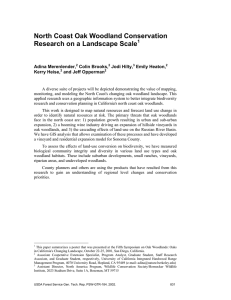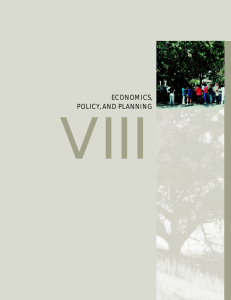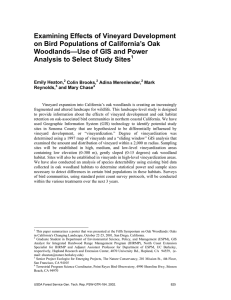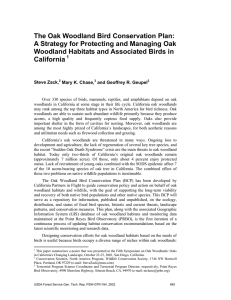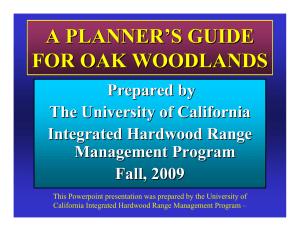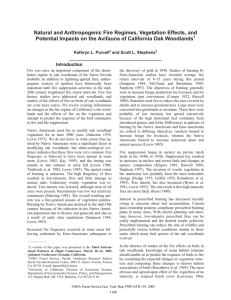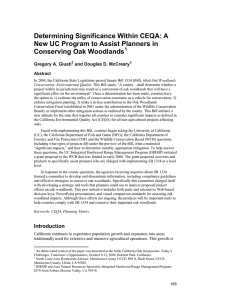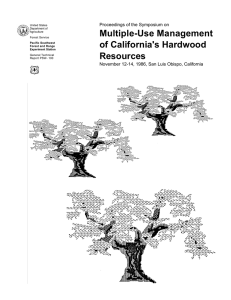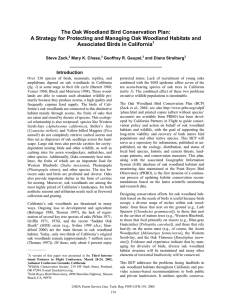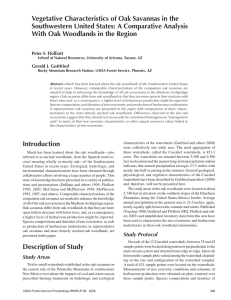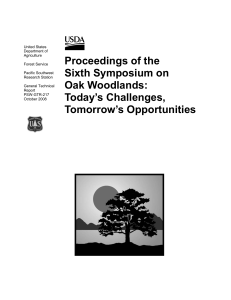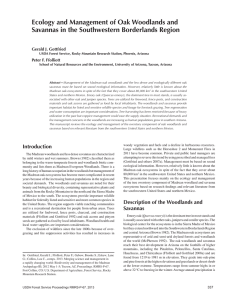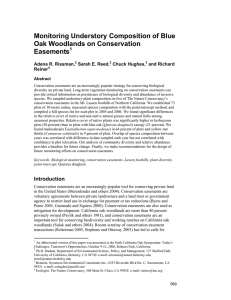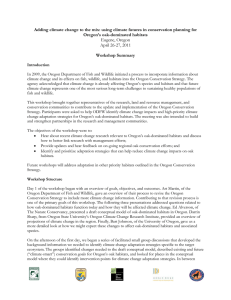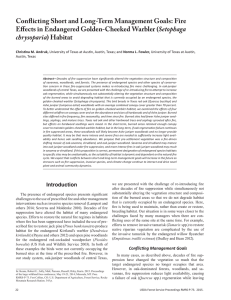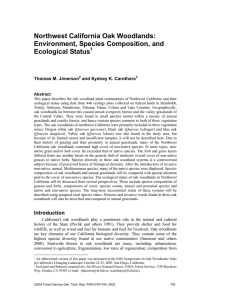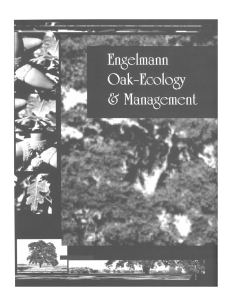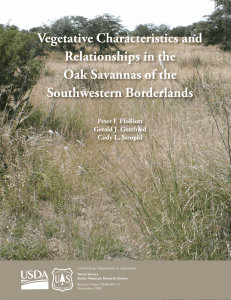Value of Oak Woodlands and Open Space California
advertisement
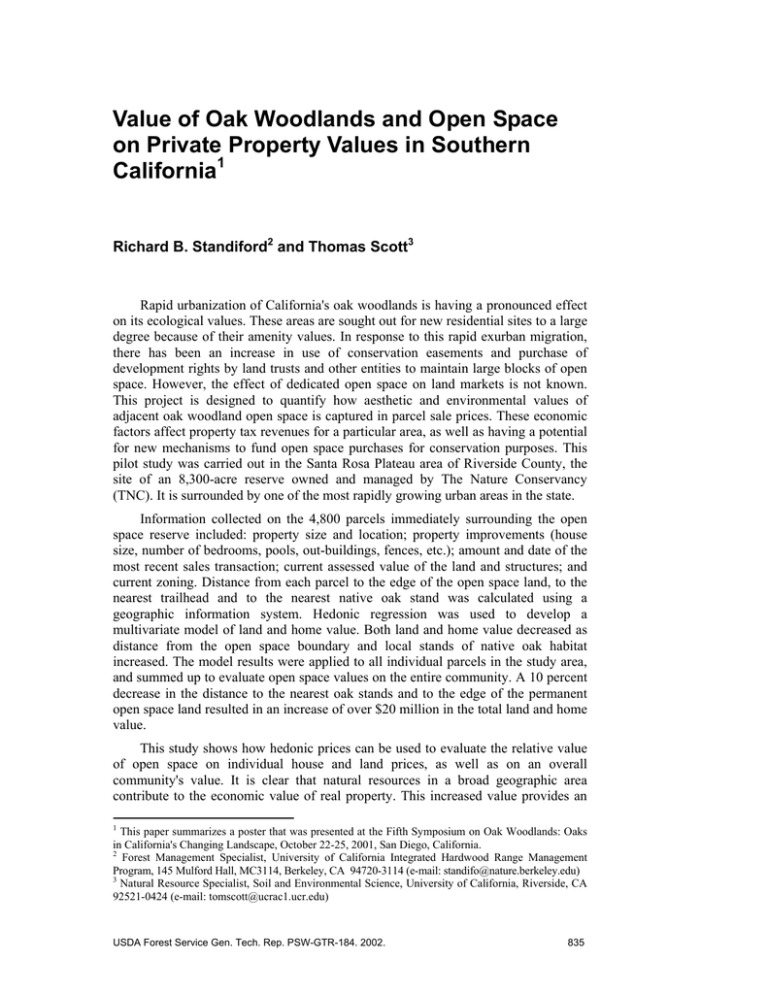
Value of Oak Woodlands and Open Space on Private Property Values in Southern California1 Richard B. Standiford2 and Thomas Scott3 Rapid urbanization of California's oak woodlands is having a pronounced effect on its ecological values. These areas are sought out for new residential sites to a large degree because of their amenity values. In response to this rapid exurban migration, there has been an increase in use of conservation easements and purchase of development rights by land trusts and other entities to maintain large blocks of open space. However, the effect of dedicated open space on land markets is not known. This project is designed to quantify how aesthetic and environmental values of adjacent oak woodland open space is captured in parcel sale prices. These economic factors affect property tax revenues for a particular area, as well as having a potential for new mechanisms to fund open space purchases for conservation purposes. This pilot study was carried out in the Santa Rosa Plateau area of Riverside County, the site of an 8,300-acre reserve owned and managed by The Nature Conservancy (TNC). It is surrounded by one of the most rapidly growing urban areas in the state. Information collected on the 4,800 parcels immediately surrounding the open space reserve included: property size and location; property improvements (house size, number of bedrooms, pools, out-buildings, fences, etc.); amount and date of the most recent sales transaction; current assessed value of the land and structures; and current zoning. Distance from each parcel to the edge of the open space land, to the nearest trailhead and to the nearest native oak stand was calculated using a geographic information system. Hedonic regression was used to develop a multivariate model of land and home value. Both land and home value decreased as distance from the open space boundary and local stands of native oak habitat increased. The model results were applied to all individual parcels in the study area, and summed up to evaluate open space values on the entire community. A 10 percent decrease in the distance to the nearest oak stands and to the edge of the permanent open space land resulted in an increase of over $20 million in the total land and home value. This study shows how hedonic prices can be used to evaluate the relative value of open space on individual house and land prices, as well as on an overall community's value. It is clear that natural resources in a broad geographic area contribute to the economic value of real property. This increased value provides an 1 This paper summarizes a poster that was presented at the Fifth Symposium on Oak Woodlands: Oaks in California's Changing Landscape, October 22-25, 2001, San Diego, California. 2 Forest Management Specialist, University of California Integrated Hardwood Range Management Program, 145 Mulford Hall, MC3114, Berkeley, CA 94720-3114 (e-mail: standifo@nature.berkeley.edu) 3 Natural Resource Specialist, Soil and Environmental Science, University of California, Riverside, CA 92521-0424 (e-mail: tomscott@ucrac1.ucr.edu) USDA Forest Service Gen. Tech. Rep. PSW-GTR-184. 2002. 835 Value of Oak Woodlands and Open Space on Private Property Values in Southern California— Standiford and Scott economic incentive for investing in conservation. These results will be used in the future to model different open space conservation and oak restoration strategies. Optimal economic patterns of open space design and restoration will be compared to conservation biology principles of optimal reserve design. The increasing scarcity of natural resources in rapidly urbanizing areas is resulting in economic values that are reflected in both individual and community economic values. This study shows promising results that can be used to evaluate how public and private investments in conservation and restoration can be justified in economic terms. 836 USDA Forest Service Gen. Tech. Rep. PSW-GTR-184. 2002.
